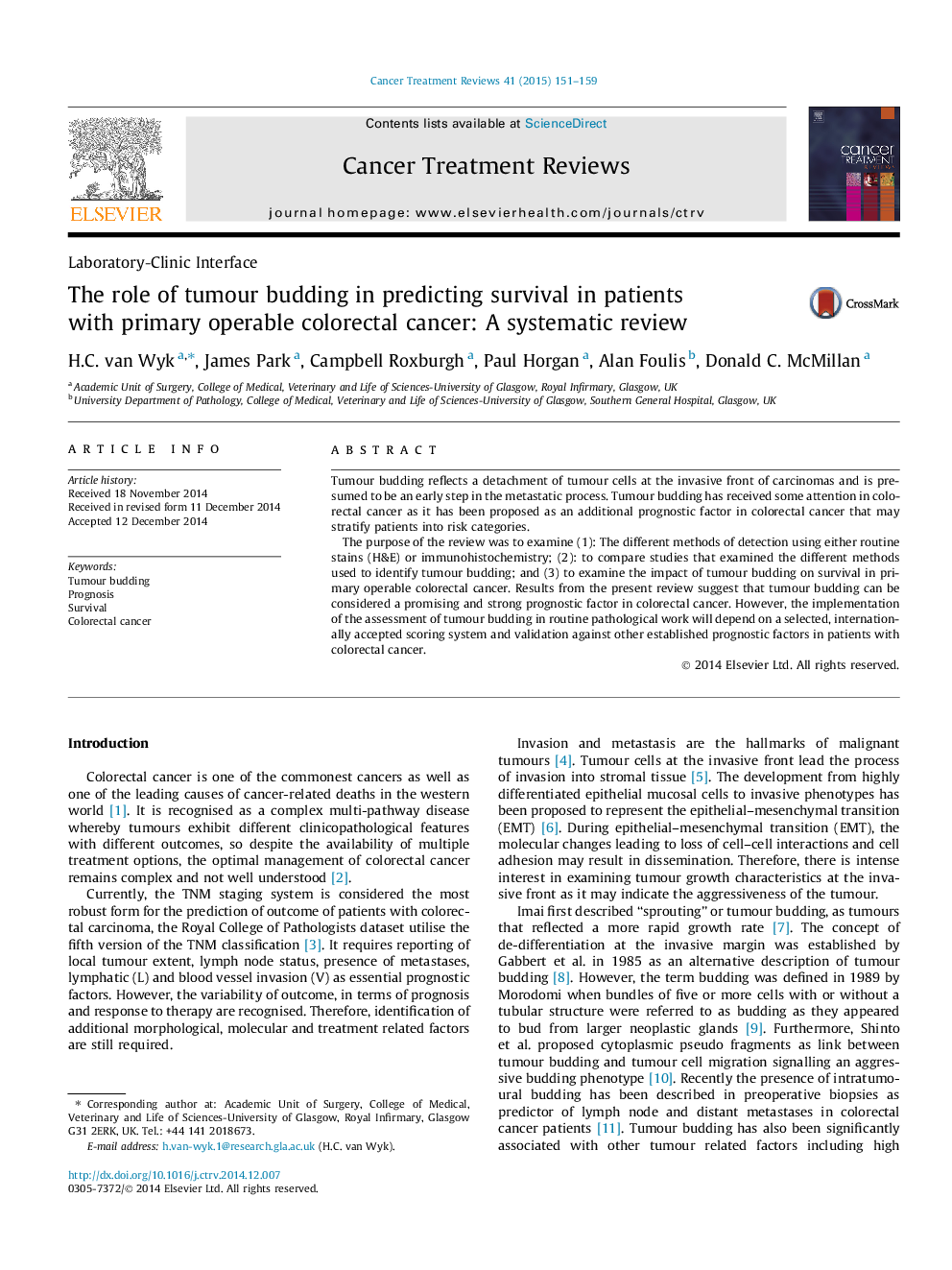| Article ID | Journal | Published Year | Pages | File Type |
|---|---|---|---|---|
| 6190454 | Cancer Treatment Reviews | 2015 | 9 Pages |
â¢Prognostic relevance of tumour budding in primary operable colorectal cancer is evaluated in terms of assessment methods.â¢Assessment methods divided in stains (H&E, IHC) together with qualitative (scoring) and quantitative (counting) approaches.â¢Tumour budding has prognostic value in primary operable colorectal cancer.â¢An optimal approach for routine practice needs to be verified and promising new methods needs to be further investigated.
Tumour budding reflects a detachment of tumour cells at the invasive front of carcinomas and is presumed to be an early step in the metastatic process. Tumour budding has received some attention in colorectal cancer as it has been proposed as an additional prognostic factor in colorectal cancer that may stratify patients into risk categories.The purpose of the review was to examine (1): The different methods of detection using either routine stains (H&E) or immunohistochemistry; (2): to compare studies that examined the different methods used to identify tumour budding; and (3) to examine the impact of tumour budding on survival in primary operable colorectal cancer. Results from the present review suggest that tumour budding can be considered a promising and strong prognostic factor in colorectal cancer. However, the implementation of the assessment of tumour budding in routine pathological work will depend on a selected, internationally accepted scoring system and validation against other established prognostic factors in patients with colorectal cancer.
